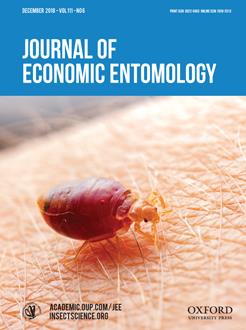Cold tolerance studies were conducted with the egg and larval stages of Mediterranean fruit fly, Ceratitis capitata (Wiedemann) and melon fly, Zeugodacus (Bactrocera) cucurbitae (Coquillett) in Navel oranges to determine whether quarantine cold treatments approved for C. capitata might also be effective against Z. cucurbitae. Navel orange is a good host for C. capitata and a poor host for Z. cucurbitae, and therefore, artificial infestation of fruit was used to facilitate comparisons. Laboratory-reared eggs and larvae were inserted in the center of Navel oranges, placed in cold storage chambers at 1.5–2.0°C for 1, 2, 4, 6, 8, 10, 12, or 14 d, then removed, and evaluated for egg hatch or larval survival. Time-response data were analyzed using linear mixed-effects models, probit analysis, and visual inspection of survivorship graphs. C. capitata eggs were significantly more cold tolerant than Z. cucurbitae eggs, and Z. cucurbitae larvae were generally more cold tolerant than C. capitata larvae. C. capitata eggs and Z. cucurbitae second instar larvae were the most cold-tolerant life stages, and they were not significantly different from each other. Results suggest that cold treatment at ≤⃒1.5°C for a minimum of 14 d would be sufficient to achieve disinfestation of C. capitata and Z. cucurbitae. The inherent cold tolerance in Z. cucurbitae is equal to or higher than that of C. capitata, and therefore, cold treatment protocols developed for C. capitata may not always be effective against Z. cucurbitae.
How to translate text using browser tools
31 July 2018
Comparative Cold Tolerance in Ceratitis capitata and Zeugodacus cucurbitae (Diptera: Tephritidae)
Peter A. Follett,
Nicholas C. Manoukis,
Bruce Mackey
ACCESS THE FULL ARTICLE
It is not available for individual sale.
This article is only available to subscribers.
It is not available for individual sale.
It is not available for individual sale.
Bactrocera cucurbitae
citrus
phytosanitary treatment
quarantine cold treatment





